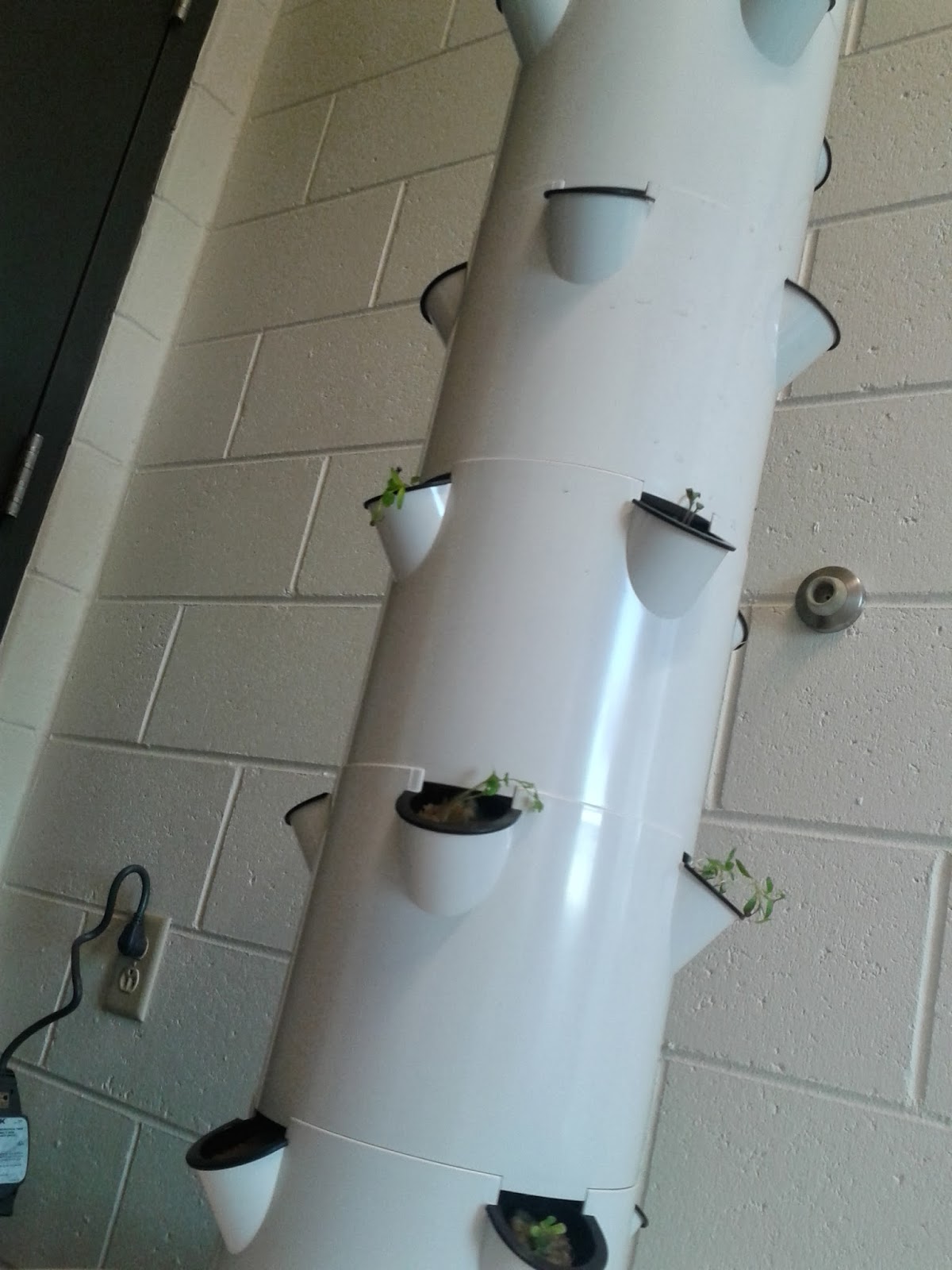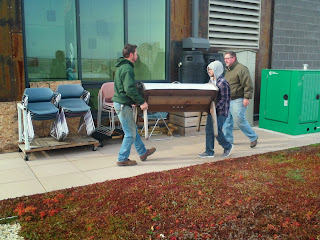The Clock Shadow Building, in addition to housing our beautiful rooftop production garden, is also home to a rainwater harvesting system that collects water from the rooftop, stores it in a 5,000 gallon underground tank, and distributes it throughout the four stories of the building to flush the toilets. This harvesting system includes multiple filtration steps, as well as a sensor that measure how much water is needed and only pumps what is required to flush the number of toilets in use.
 |
| Storage tank pre-filter. Photo courtesy of WaterTronics. |
 |
| Water Control panels located onsite. Photo courtesy of Watertronics. |
By capturing grey water for toilet flushing, we're able to decrease the amount of rainwater flooding the sewer system after rainfall, resulting in fewer sewage overflow events - each of which release tons of human waste in to the lake. This, along with the green roof which captures 1-2 inches of rain fall in the soil, is an important way our building supports the health of Milwaukee's waterways.
Interested in water harvesting for your home? Most people think of rainbarrels, but you can also consider a greywater harvesting system for your home. Major sources of greywater in your home include your washing machine, bathroom sink, and shower/bathtub. The most recent edition of Urban Farm magazine shares some tips tricks for utilizing home grey water in your urban farm or backyard garden:
- Use grey water within 24 hours of harvesting - if left too long the water can breed bacteria and bad smells.
- Seedlings should NOT receive your grey water - they can't handle the soaps/detergents that might be present.
- Apply your greywater directly to the soil - do not use on root crops or leafy green vegetables where the edible part may come in contact with the water. Grey water is best for fruiting aboveground vegetables (tomatoes, beans, peppers, etc).
- Alternate grey water application with fresh water - the sodium salts from the grey water will raise the pH of the soil over time.
- No more than 1/2 gallon per square foot each week - University of Massachusetts Extension Service also recommends shower or bathtub water being best for your garden, followed by bathroom sink and washing machine. Some sources recommend AGAINST using kitchen sink water because of the food particles and grease residues which can encourage bacterial growth.
The Enact WI blog also has a great article on grey water irrigation systems for home toilet flushing. If you're not interested in investing in a large irrigation system, consider using buckets to capture water from your washing machine or bathtub and using it to flush your toilet!




















































